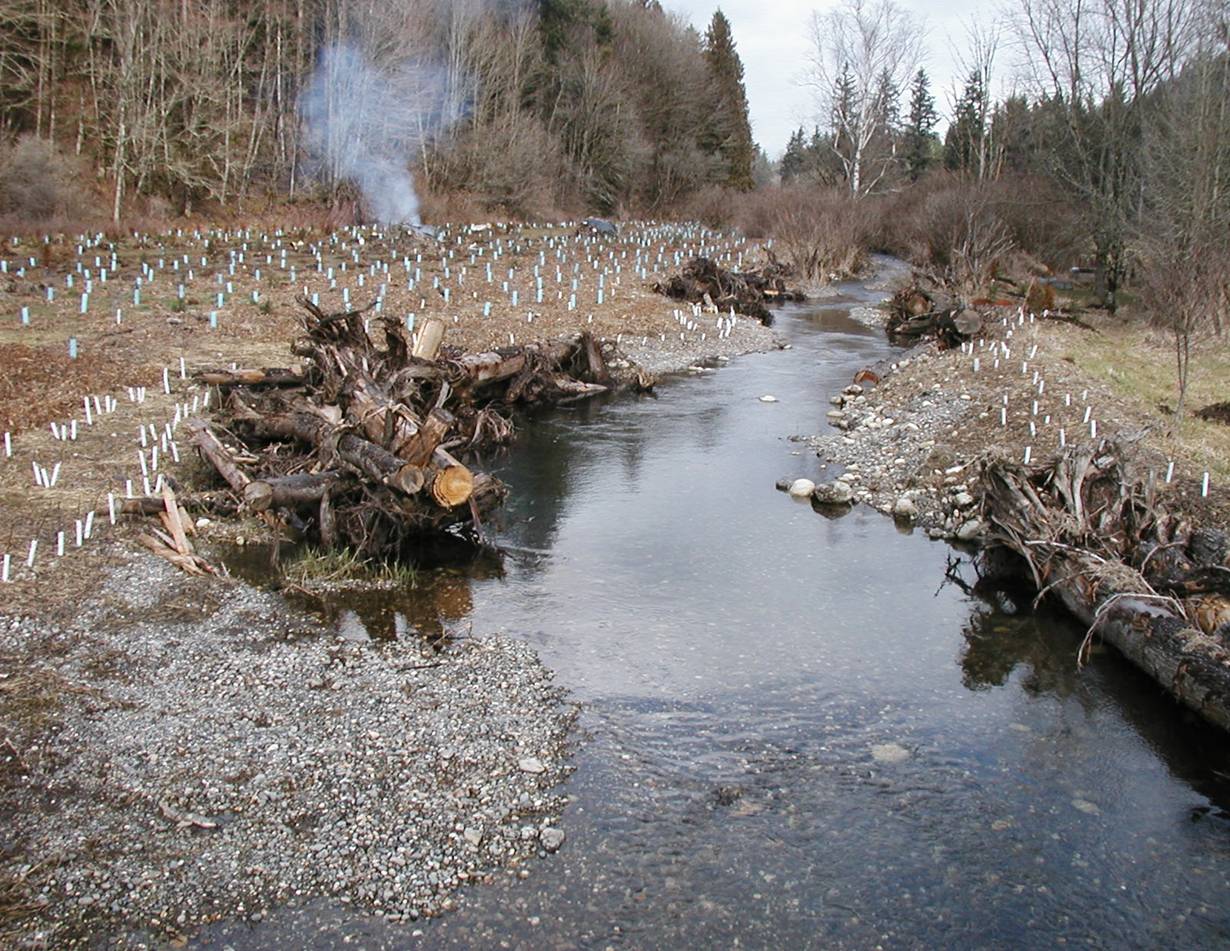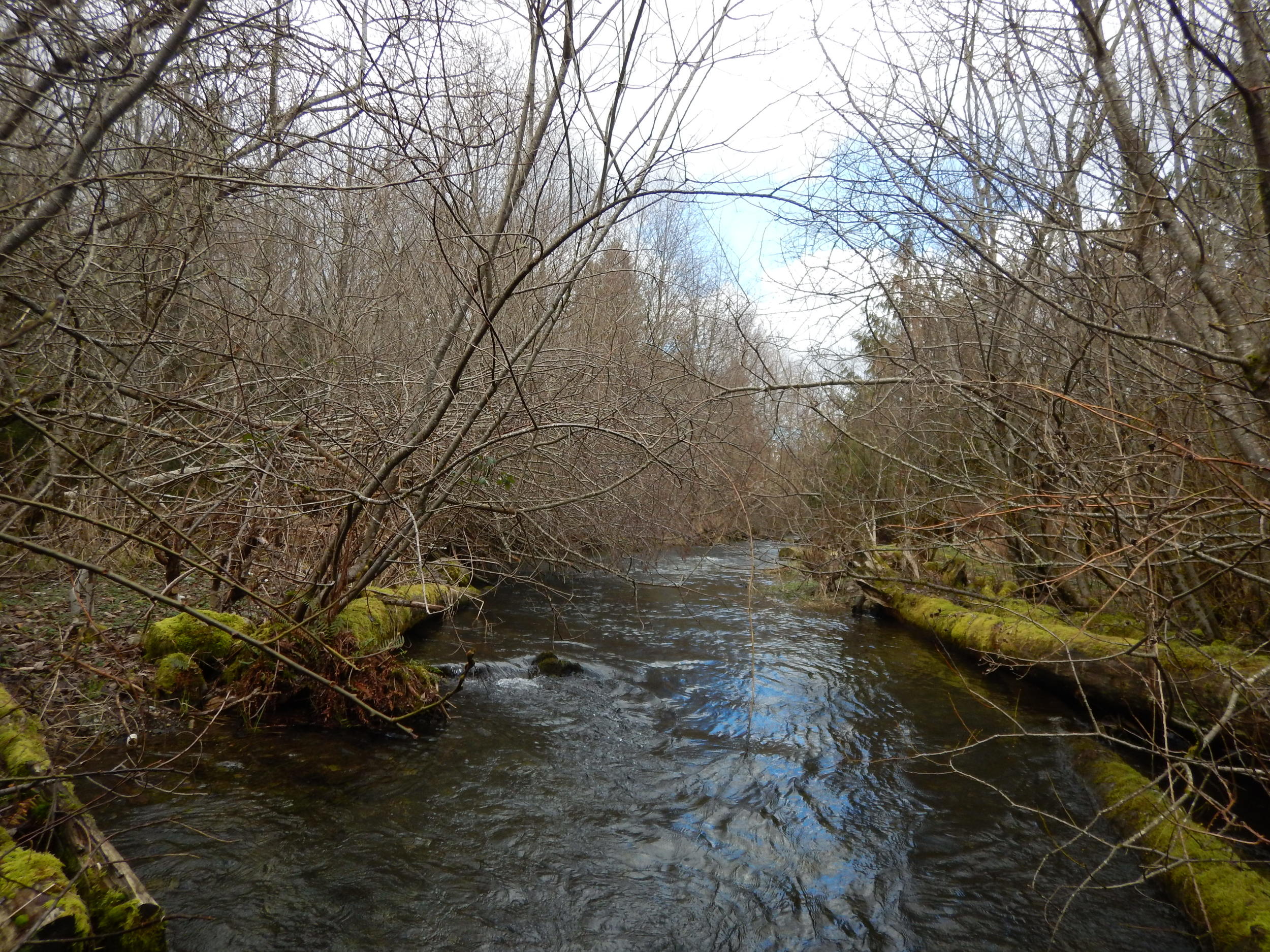Restoration projects at NSEA support thriving salmon populations in Whatcom County. Engaging landowners to remove barriers for migrating fish and increase habitat diversity is essential for the sustainability of healthy watersheds. NSEA enhances riparian areas through planting and monitoring restoration sites to provide clean, cold, and clear water, shade the streams, and limit erosion.
Do you have a stream in need or a former project that needs maintenance? Fill out the form below and we will get back to you.
Bringing Life to Streams
Removing Barriers to Migrating Fish
Since 1991, NSEA has removed 170 migratory barriers to fish by fixing broken culverts or replacing culverts with bridges (see below). This work has resulted in the opening of over 140 miles of upstream habitat for young fish and spawning adults.
No migration - fish stuck below the culvert
Freedom to migrate up and down stream
STREAM BANK RESTORATION
The planting of native trees and shrubs along stream banks restores function in the riparian zone. This work improves salmon habitat by shading the stream (keeping water temperatures cool) and limiting erosion (keeping the water clear). NSEA crew members, community volunteers, and students have planted over 470,000 since 1991.
Even more, a well intact riparian zone:
Provides adequate habitat for salmon and other wildlife.
Contributes to consistent stream flows throughout the year.
Buffers against high flood flows and low summer flows.
Helps to filter pollutants.
transFORMING STREAMS
In-stream salmon habitat improvement projects include adding massive root wads & whole tree trunks (aka Large Woody Debris - LWD), gravel, and other features to create crucial salmon rearing and spawning habitat. To date, NSEA has installed 2,233 LWD across Whatcom County.
NSEA connects resources and people together for the common good. Even small sections of improved streams, amid otherwise degraded habitat, can immediately provide an island of habitat for salmon.
This interactive GIS map showcases the cumulative impact of our programs, highlighting efforts in habitat restoration, community engagement, and environmental education. Click on each icon to explore individual project details.
Collective Impact:
Blue (Instream Projects): Over 170 barriers removed and more than 2,200 pieces of Large Woody Debris (LWD) installed, improving fish passage and access to over 140 miles of upstream habitat.
Green (Riparian Projects): More than 470,000 native trees and shrubs planted, with 800+ projects actively maintained and monitored—enhancing over 588,000 linear feet of habitat.
Red (Schools): Over 34,000 students engaged in science-based ecological programs, learning through the lens of salmon and watershed stewardship.
Our work is made possible by a dedicated community—hosting 1,300+ volunteer work parties and engaging over 45,000 volunteers. Together, we’re restoring ecosystems and fostering future environmental leaders.
GIS map by Astoria Tershy









